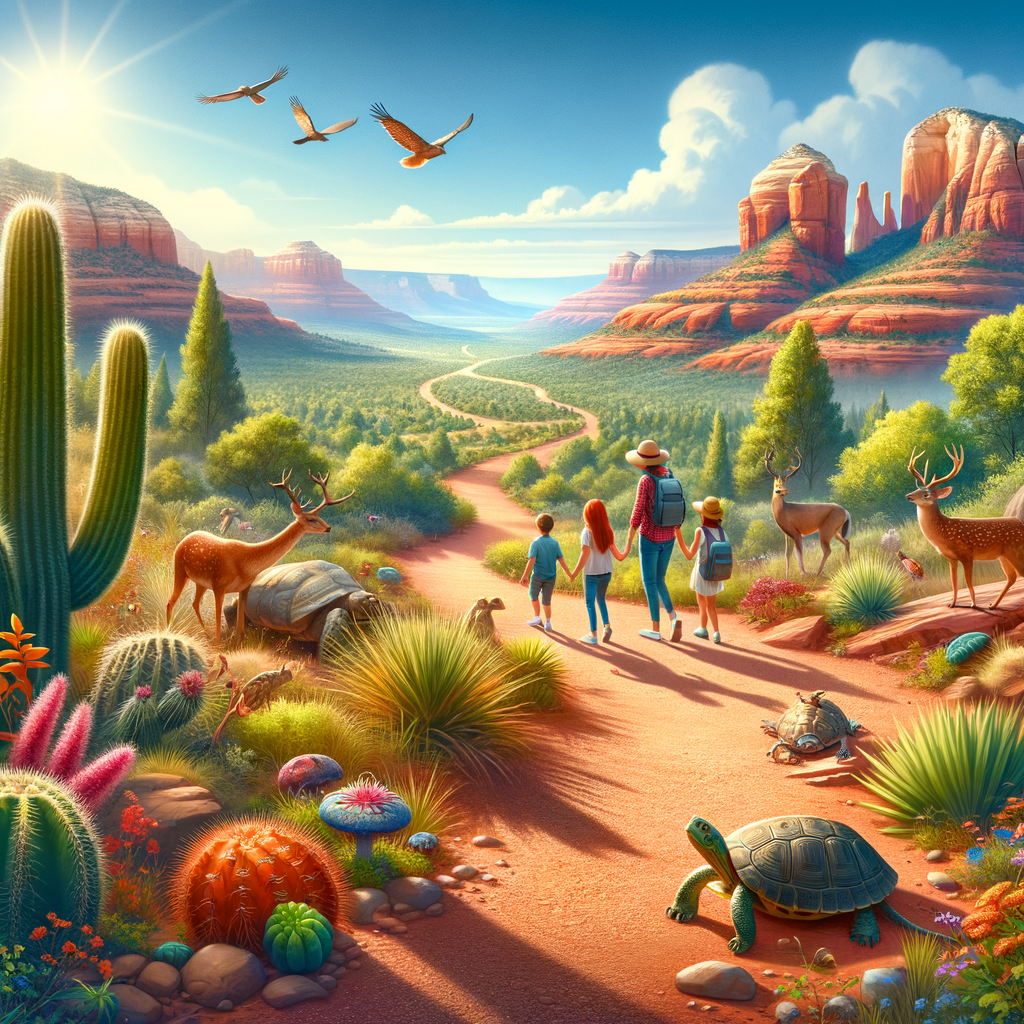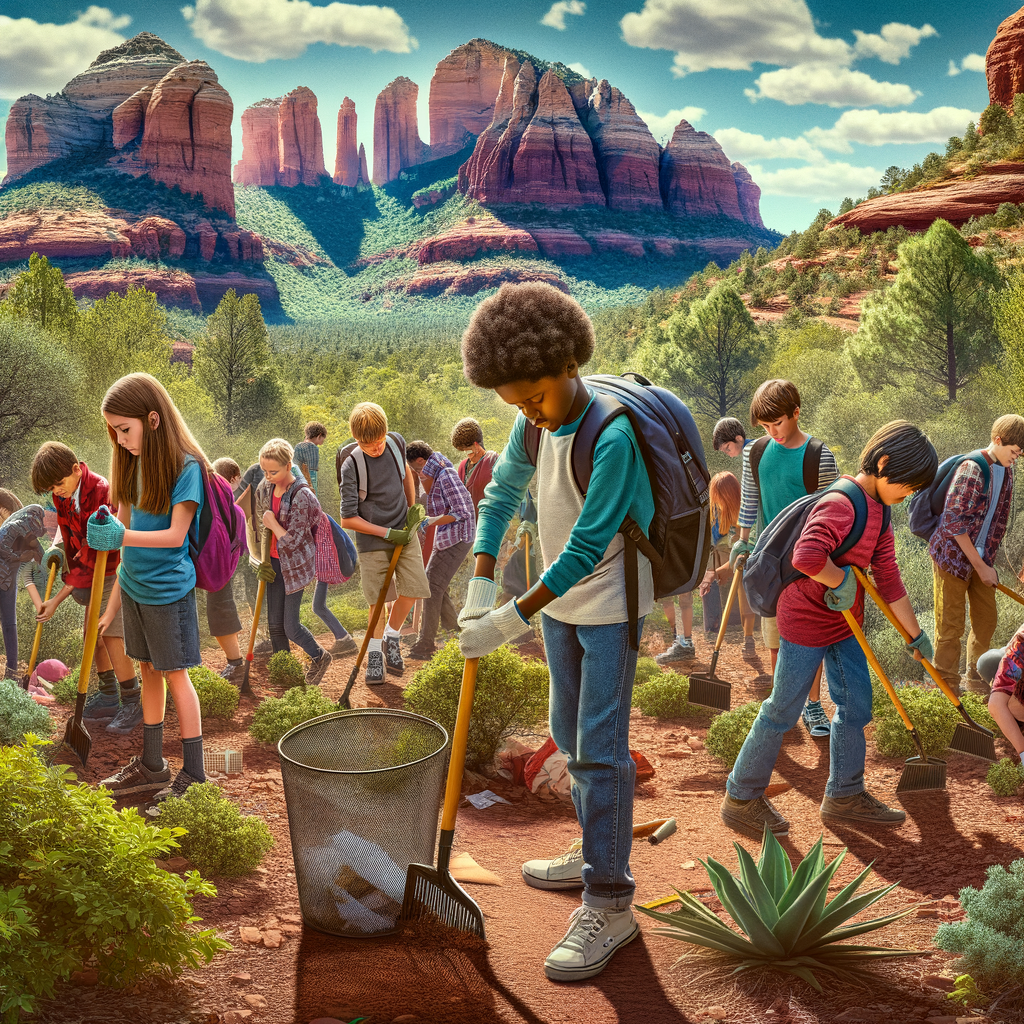Wildlife Viewing in Sedona: Discover the Desert’s Fascinating Creatures
“`html
Wildlife Viewing: Spot Diverse Desert Wildlife in Their Natural Habitats
Understanding Desert Ecosystems
The desert is often seen as a barren wasteland, but has anyone ever told you that it teems with life? That’s right! From cacti to critters, the desert ecosystem is a stunning tapestry of biodiversity. This unique environment fosters a range of species adapted to thrive in extreme conditions. Imagine a landscape where survival means finding water, food sources, and shelter — all while dodging the harsh sun!
Deserts possess different microhabitats, including sandy dunes, rocky outcrops, and even lush oases. Each of these supports diverse types of wildlife. For instance, desert toads burrow into the ground, while snakes slither over stones on the hunt for prey. Understanding these ecosystems can significantly enhance your wildlife viewing experience, as it allows you to appreciate the intricate relationships within this natural tapestry.
Common Desert Wildlife Species
Now, let’s dive into the fascinating world of desert wildlife. Have you ever wondered what animals might scurry by during your desert adventures? You can expect to spot a plethora of creatures ranging from adorable rodents to majestic birds of prey. Think kangaroo rats, lizards, and even red-tailed hawks soaring overhead. Each species comes with its own unique adaptations to the arid environment — pretty impressive, right?
Take, for example, the desert tortoise. This gentle reptile can live for over 50 years and has a remarkable ability to conserve water, making them true survival champions. Their slow and steady nature is a lesson in patience for us all. Moreover, the vibrant array of snakes, such as rattlesnakes and gopher snakes, are essential for controlling rodent populations. Observing these species in their natural habitats provides a thrilling glimpse into the delicate balance of desert life.
Best Times for Wildlife Viewing
Timing is everything, especially when it comes to wildlife viewing in the desert. Early mornings and late afternoons are when many creatures are most active—think of it as nature’s happy hour! During these cooler parts of the day, animals venture out to feed, making them easier to spot. Temperature extremes drive many species to seek shade during the scorching midday sun, leading to a quiet wilderness. Can you imagine walking through the desert as the sun rises, with the world awakening around you?
Additionally, seasons play a crucial role in wildlife visibility. Spring, for instance, brings an explosion of life with blooming flowers and animals thriving flush with energy. This is when you’ll see more mating behavior and young animals attracting attention. However, winter can offer its own unique wildlife viewing experiences, as many species adapt their strategies to thrive in cooler weather. So, pack your binoculars and keep an eye on the calendar!
Essential Tips for Wildlife Viewing
No one wants to stroll into the wild unprepared, right? To ensure you have the best possible wildlife viewing experience, there are some essential tips to keep in mind. First off, maintaining a safe distance is crucial. Disturbing wildlife can jeopardize your safety and disrupt their natural behavior. Think of it like trying to watch a movie: you wouldn’t want someone sitting in your lap, would you?
Next, consider the power of silence. Sneaking around quietly can significantly improve your chances of spotting elusive creatures. Instead of stomping around, stick to soft treads and avoid loud noises. Blending in with your surroundings can also make a huge difference! Dress in earthy colors, use natural scents, and be aware of your movements. With these tactics, you’ll find yourself in the heart of the action, enjoying an up-close view of nature in all its glory.
Engaging with Local Guides
If you’re a first-timer or maybe just want to maximize your experience, engaging with local wildlife guides can be a game-changer. Why? Because these experts know the ins and outs of the desert like the back of their hands! They’ve spent countless hours tracking animals and understanding their habits, so they can point you in the right direction. Imagine how much richer your experience will be when you’re learning from someone who’s passionate about the desert ecosystem!
Moreover, local guides often have insider knowledge on the best viewing spots and times, which can enhance your chances of spotting unique wildlife. They can also provide safety tips and share fascinating stories about the creatures you’re likely to encounter. So, don’t forget to ask questions and soak in the knowledge—it’s like getting a backstage pass to nature’s show!
Staying Safe While Wildlife Viewing
While observing wildlife is thrilling, safety should always come first. The desert can be unpredictable, and we don’t want you to end up in a tricky situation. Always carry plenty of water—dehydration happens faster than you think! Plus, a sturdy pair of hiking boots can save your feet, especially on rocky terrain. And hey, sunscreen and a good hat will keep you safe from those strong desert rays.
Additionally, familiarize yourself with the wildlife you might encounter. Some creatures may be harmless, while others could pose potential threats. Remember, it’s their home, and we’re simply visitors. If you happen to cross paths with a rattlesnake, maintain a healthy distance and observe from afar. Keeping calm and respectful of their territory ensures a safe and unforgettable wildlife viewing experience.
Documenting Your Wildlife Encounters
What’s more satisfying than capturing a beautiful moment in nature? Documenting your wildlife encounters through photography or journaling not only brings joy but helps raise awareness about desert ecosystems too! A well-timed snapshot can tell a powerful story about the creatures you’ve seen and the beauty of their habitats. Plus, it’s something you can share with friends and family back home!
When shooting wildlife photos, remember to respect their space. Consider using a zoom lens to capture breathtaking images without intruding on their natural behavior. Journaling your experiences encourages reflection, allowing you to appreciate the moments you’ve shared with nature even more. Who knows? Your insights and observations could inspire someone else to embark on their wildlife adventure!
Conclusion
Exploring the desert and its incredible wildlife can be one of life’s most rewarding experiences. By understanding the ecosystem, observing wildlife appropriately, and taking the necessary safety precautions, you create a recipe for unforgettable adventures. So why not lace up those hiking boots and head into the wild? The desert is waiting to reveal its hidden gems, teeming with vibrant life just waiting to be discovered!
FAQs
1. What time of year is best for wildlife viewing in the desert?
Spring and early fall offer the best opportunities as animals are more active and the weather is mild. However, each season has its unique charms!
2. Is it safe to approach wildlife in the desert?
No, it’s essential to maintain a safe distance to protect both yourself and the animal. Observing from afar ensures a safer experience.
3. What do I need to bring for a wildlife viewing trip?
Bring plenty of water, snacks, sun protection, comfortable footwear, and binoculars for the best viewing experience!
4. Are there guided tours available for wildlife viewing?
Yes, engaging with local guided tours can enhance your wildlife viewing experience as they provide expert knowledge and safety tips.
5. What should I do if I encounter a rattlesnake?
Keep your distance and calmly move away. Rattlesnakes are usually not aggressive if left undisturbed.
If you are interested in looking into an organized tour for you and your kids, consider visiting our preferred vendor: Sedona Red Rock Adventures.
“`
news via inbox
To be update with all the latest news.




